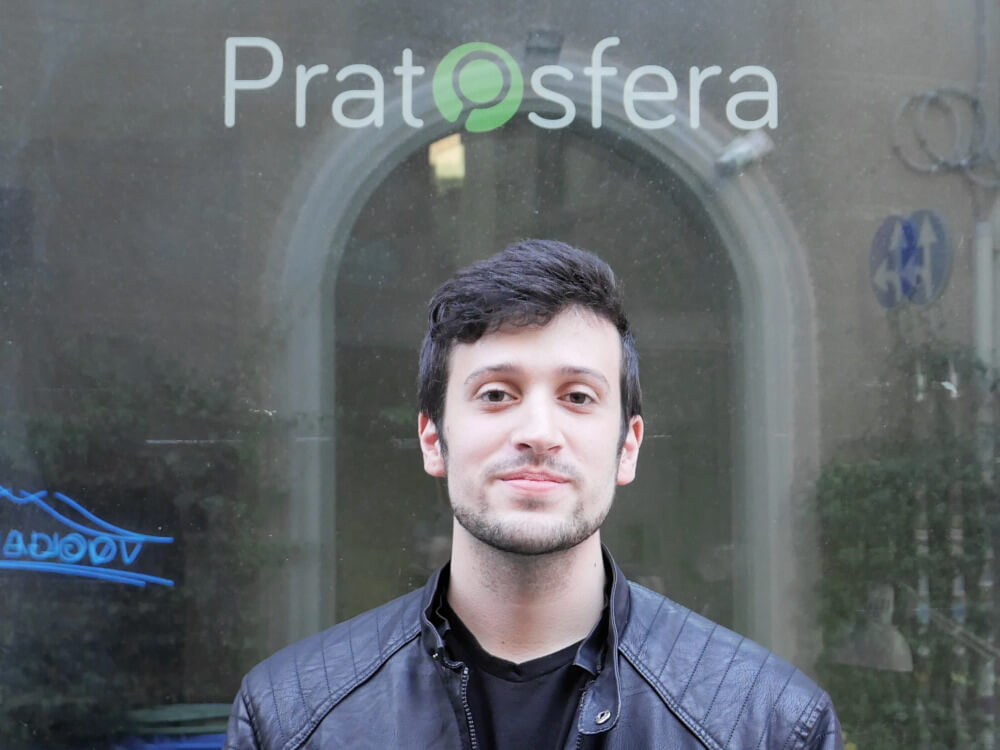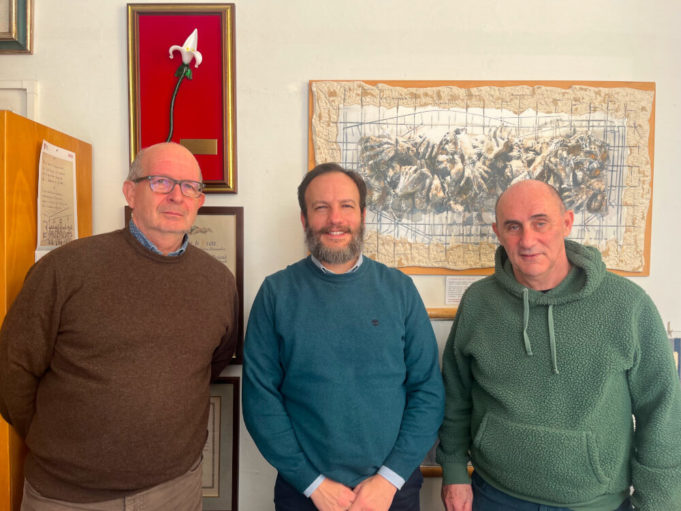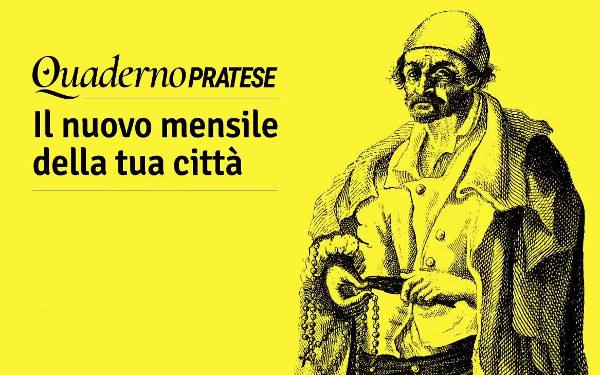Più di due settimane dopo sono arrivato a Prato, la Speciale Giornata della Memoria è commemorata in molti modi diversi a Prato. Mentre ricercavo gli eventi di quella settimana, molti erano dedicati al rafforzamento della memoria della Shoah tra i giovani, e alla celebrazione dell’arte e letteratura dalla Seconda Guerra Mondiale.
Essendo io molto interessato ad imparare la Shoah dalla prospettiva italiana, ho deciso di frequentare un paio di eventi per commemorare la Shoah. Negli Stati Uniti, eventi come questo esistono, ma sono più rari che in Italia, cosa che mi ha incuriosito.
Venerdì 27 gennaio ho visitato il Museo di Palazzo Pretorio a Prato, per una visita guidata alle opere di Jacques Lipchitz – uno scultore lituano che ha dovuto scappare dall’Europa a causa della persecuzione razziale. Anche se avevo un po’ di difficoltà a capire tutto ciò che la guida diceva, ho conosciuto uno scultore molto influente che ha subito la persecuzione razziale durante la Seconda guerra mondiale.
Quattro giorni dopo, martedì 31 gennaio, ho frequentato un evento educativo che si è tenuto alla Sala della Casa del Combattente, in Piazza San Marco. Durante l’evento, gli studenti delle università vicine hanno guardato delle presentazioni dato dalle persone importanti sul tema della Shoah. I presentatori hanno parlato anche della responsabilità che tutti noi abbiamo nel rafforzare la memoria della Shoah e fare in modo che la storia non si ripeta.
All’evento, ha avuto il piacere di conoscere Gabriele Alberti, il presidente dell’Associazione Nazionale Ex Deportati Nei Campi Nazisti (ANED), che qualche giorno fa ha fatto un’intervista con me e mi ha fatto conoscere meglio il significato culturale delle Shoah in Italia.
Anche se sapevo prima la storia della Seconda guerra mondiale in Italia, ho imparato molto dalla prospettiva di Alberti, e sono rimasto sorpreso dalle differenze di come la gente americana e la gente italiana parla della Shoah.
All’inizio, Alberti mi ha fatto una panoramica dell’ANED e dei suoi obiettivi, dicendo che «Questa associazione nel corso degli anni ha aiutato a riunire gli ex-deportati» e che «È da questa associazione è nata la volontà precisa degli ex deportati di raccontare non solo gli orrori del nazifascismo nei campi di sterminio…di concentramento nazisti, ma soprattutto di utilizzare questa memoria per i giovani, per le nuove generazioni».
Durante l’intervista, ho imparato che uno dei motivi principali per cui la Shoah è così presente nella cultura italiana è perché è una esperienza vissuta. Non solo la Germania nazista occupò l’Italia, ma migliaia di italiani sono stati deportati, lasciando fratture che non sono ancora state rimarginate.
Però, anche se la Shoah è una storia vissuta qui in Italia, ci sono ancora dei problemi, specialmente con il rafforzamento della memoria tra i giovani. Per questo ANED lavora instancabilmente per rafforzare questa memoria tra i giovani italiani.
Alberti dice anche che «In Italia, il percorso scolastico arriva ancora con difficoltà a parlare della seconda guerra mondiale… [molti ragazzi pratesi] non sanno che ci sono stati dei deportati pratesi».
Soprattutto, vivere gli eventi legati alla Giornata della Memoria è stata una esperienza illuminante per me; mi ha mostrato che anche se gli italiani e gli americani commemorano la Shoah in modi diversi, c’è una verità che esiste in tutto il mondo: che non possiamo mai smettere di rafforzare la memoria della Shoah perché abbiamo la responsabilità di far sì che la storia non si ripeta.

Nei prossimi mesi Samuel Weinmann racconterà Prato dal suo punto di vista. Seguirà concerti, spettacoli e molto altro e poi ne scriverà sia in inglese che in italiano su Pratosfera.
English Version
A little more than two weeks after I arrived in Prato, the Special Remembrance Day of the Holocaust was being commemorated in various ways throughout Prato. As I was looking through the events being held that week, many of them were specifically devoted to reinforcing the memory of the Holocaust among the youth and celebrating art and literature from World War II.
Deeply interested in learning about the Holocaust from the Italian perspective, I decided to attend a couple of events to commemorate the Holocaust. From my experience, in the United States, events like these exist, but far less frequently than Italy, which intrigued me. On Friday, Jan. 27, I visited Il Museo di Palazzo Pretorio in Prato for a guided tour of the Jacques Lipchitz exhibit, who was a Lithuanian sculptor who had to escape Europe due to racial persecution. Although it was hard for me to pick up everything said in the tour, I was able to learn about a deeply influential artist who experienced racial persecution during WWII.
Just a few days later, on Tuesday, Jan. 31, I attended an educational event held at the Sala della Casa del Combattente, in Piazza San Marco. During the event, university students from nearby universities gathered for presentations held by various important individuals on the Holocaust–or Shoah–and the responsibility that everybody bears to keep its memory strong and to ensure that history doesn’t repeat itself.
At the event, I had the pleasure of meeting Gabriele Alberti, the president of the National Association of Former Deportees to Nazi Camps (ANED), who a few days later in an interview enlightened me on the cultural significance that the Shoah holds in Italy due to its history.
Although I knew previously of Italy’s history during WWII, I learned a lot from Alberti’s perspective, and I was shocked at how differently the Holocaust is treated in the United States versus Italy due to historical differences.
At the beginning of the interview Alberti gave me an overview of ANED and its objectives, saying that “this association over the years has helped to reunite ex-deportees,” and that “from this association comes the will of ex-deportees to tell not only the errors of Nazi fascism in Nazi extermination camps, but overall to use this memory for the youth, for the new generation.”
Throughout the interview, I learned that one of the primary reasons why the Holocaust is so present in Italian culture is because it is such a lived experience. Not only did Nazi Germany occupy Italy, but thousands of Italians were deported, with fractures that still haven’t been healed.
However, even though the Holocaust is such a lived event here in Italy, there are still issues with reinforcing its memory among the youth, which is why ANED works so tirelessly to reinforce this memory for young Italians, and specifically young Pratesi with the city’s chapter.
Alberti elaborated on this fact, saying that “In Italy, even still with the school system, it is difficult to talk about WWII,” and that “many Pratesi kids don’t know that there were deportees from Prato.” He then told me to experiment, by “asking kids around my age if they know about the ex- deportees from Prato. They won’t know about it.”
Overall, experiencing events around the time of the Special Remembrance Day was an enlightening experience for me; it showed me that although Italians and Americans commemorate the Holocaust in different ways, there is a truth that rings painfully true everywhere: that we must never stop reinforcing the memory of the Holocaust, as the responsibility to ensure that history doesn’t repeat itself lies in all of us.







